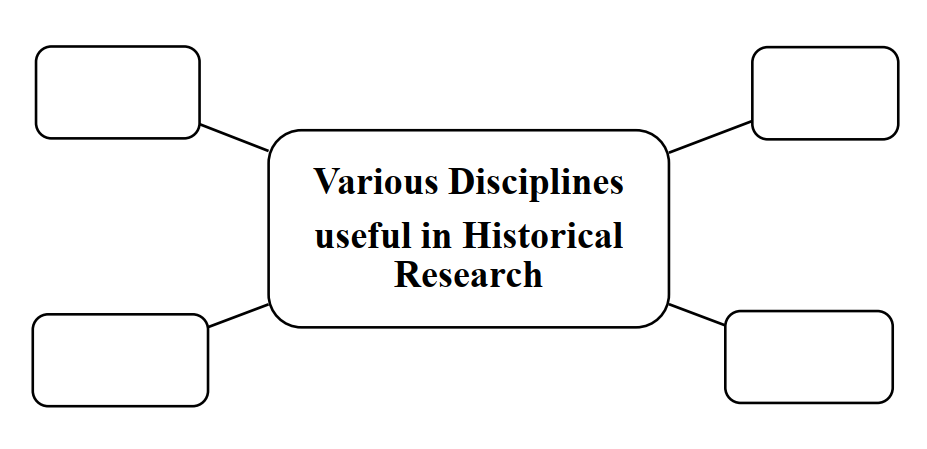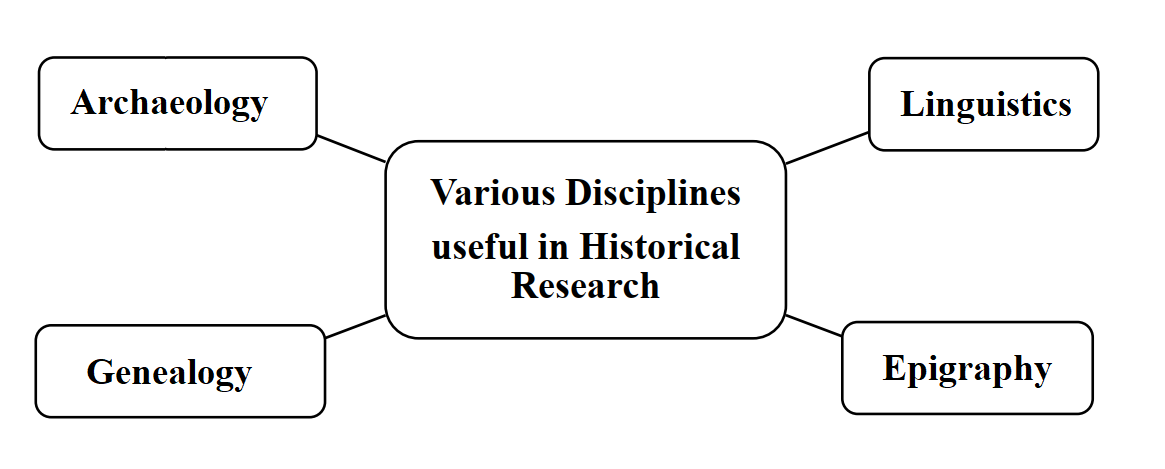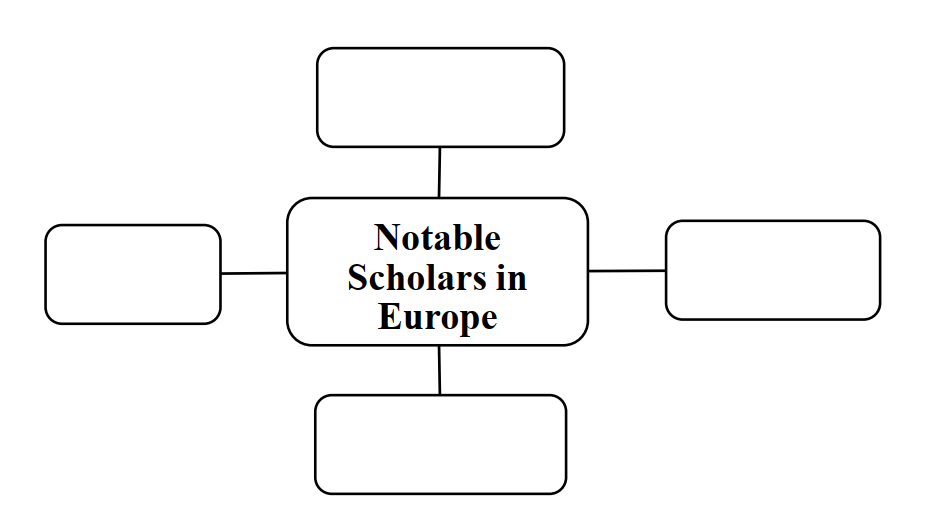Chapter : 1 - Historiography : Development in the West
Q.l. (A) Choose the correct option from the given options and complete the sentences.
1. It may be said that, ……………. was the founder of modem historiography.
(A) Voltaire (B) Rene Descartes (C) Leopold Ranke (D) Karl Marx
2. ……………. wrote the book entitled ‘Archaeology of Knowledge’.
(A) Karl Marx (B) Michel Foucault (C) Lucien Febvre (D) Voltaire
3. ‘Dialectics’ method was explained by ……………..
(A) Voltaire (B) Hegel (C) Leopold Ranke (D) Karl Marx
4. At the onset of the twentieth century ……………. school of historiography in France, gave a new direction to history writing.
(A) Annales School (B) Marxist (C) Dialectics (D) Feminist
5. ……………. explained the class theory.
(A) Karl Marx (B) Michel Foucault (C) Lucien Febvre (D) Voltaire
B) Identify the wrong pair in the following and rewrite.
(1)
i. Georg Wilhelm Friedrich Hegel – ‘Reason in History’
ii. Leopold von Ranke – ‘The theory and Practice of History’
iii. Herodotus – ‘The Histories’
iv. Karl Marx – ‘Discourse on the Method’
Ans: Wrong pair: Karl Marx – ‘Discourse on the Method’
(2)
i. Rene Descartes – The founder of modern historiography
ii. Karl Marx – Class Theory
iii. Michel Foucault – Archaeology of Knowledge
iv. Georg Wilhelm Friedrich Hegel – Dialectics
Ans: Wrong pair: Rene Descartes – The founder of modem historiography
(3)
i. The physical and natural sciences – an empirical method
ii. Modem Historiography -a scientific method
iii. Gottingen University – an independent department of history
iv. Annales School – British historians
Ans: Wrong pair: Annales School – British historians
Q. 2(A) . Do as instructed.
1. Complete the following concept map . 
Ans.

2. Complete the following concept map
Ans.

3. Complete the following table.

Ans.

3. Complete the following table.

Ans.
Q. 2. (B) Write short notes on
1. Dialectics
Ans:
(1) The method of analysis of history based on opposites, as presented by the German philosopher Georg Wilhelm Friedrich Hegel is known as ‘Dialectics’.
(2) Hegel proposed that human mind can grasp any event only after understanding its meaning in terms of two direct opposites. For e.g. True-False, Good-Bad, etc.
(3) According to this method, a theory is proposed at the beginning, which is called, ‘Thesis’ followed by another theory contrary to the thesis, called the ‘Antithesis’.
(4) A new thesis is then proposed, after a thorough logical discussion, which includes the gist of both, the thesis and the antithesis. This process of arriving at the new thesis is called, ‘Synthesis’.
2. Annales School
Ans:
(1) Annales School, was a new school of historiography which arose in France at the onset of twentieth century.
(2) It was started by French historians.
(3) It gave a new direction to history writing.
(4) According to this school, history was not only about the political events, kings, great leaders, politics, diplomacy and wars but it also included the climate, local people, agriculture, trade, technology, means of communication, social divisions and their collective psychology, etc. in the historical times.
3. The historian
Ans:
(1) The writing of critical historical narrative is known as ‘Historiography’ and the scholar who is involved in the writing of this narrative is known as a ‘Historian’.
(2) A historian critically examines the historical sources while writing the historical narrative.
(3) While writing the historical narrative, he interprets and includes only those historical events, which fit in the conceptual framework adopted by him. This means that every past event is not included by him. For e.g. A historian studying the history of Chhatrapati Shivaji Maharaj will also study about the other rulers of that period, but will write history from the point of view of Chhatrapati Shivaji Maharaj.
(4) Such conceptual framework and the events selected by the historian determine his style of writing historiography.
4. Rene Descartes
Ans:
(1) Rene Descartes was the foremost among scholars who insisted on critically examining the historical documents to verify their reliability.
(2) He wrote a book, ‘Discourse on the Method’.
(3) In this book he mentioned, “Never to accept anything for true till all grounds of doubt are excluded.” This was one of the rules laid by him.
(4) This rule had a great impact on the scientific method of research.
Q.3. Explain the following statements with its reason.
1. In historical research, it may not be possible to use the method of laboratory experiments and observation.
Ans:
(1) In the physical and natural sciences, the laboratory method of experiments and observation, also known as empirical method, is used to verify the available knowledge.
(2) This method establishes laws which remain true irrespective of the time and space and can also be tested and proved repeatedly.
(3) However, it may not be possible to carry out historical research using this method of experiments and observation, as today’s history writers were not present in the historical time and space.
(4) Also, the historical events to be mentioned cannot be recreated and it is not possible to establish laws of history that remain true irrespective of the time and space.
Hence, it may not be possible to use the method of laboratory experiments and observation in historical research.
2. Historical research was driven to focus in depth on various aspects of women’s life.
Ans:
(1) The restructuring of the history from the perspective of women based on this ideology is known as feminist historiography. The French scholar Simone de Beauvoir established the fundamentals on feminism through her writings.
(2) The feminist historiography emphasised not only on the inclusion of women in history but also on the rethinking of the male dominated perspective of history.
It is this change of perspective which drove the historical research to focus in depth on various aspects of women’s life.
3. Foucault called his method, ‘The archaeology of knowledge’.
Ans:
(1) In the twentieth century, Michel Foucault, a French historian, brought forth a new concept in historiography.
(2) He rejected the practice of arranging historical events in a chronological order. He explained that archaeology does not intend to reach the ultimate historical truth but attempts to explain various transitions in the past.
Hence, Foucault called his method, which gave importance to explain the transitions in history, as ‘the Archaeology of Knowledge’.
4. It is said that Voltaire was the founder of modern historiography.
Ans:
(1) The French scholar, Voltaire (original name was Francois-Marie Arouet) was of the opinion that apart from objective truth and chronology of historical events, historiography should also be based on social traditions, trade, economy, agriculture, etc.
(2) He, thus gave importance to the understanding of all aspects of human life while writing history.
As Voltaire contributed greatly to historiography, he is said to be the founder of modern historiography.
Q.4. Read the following extract and answer the questions below.
The tradition of recording historical event can be traced back to Sumer civilisation in Mesopotamia. Names of Sumerian kings and the stories of battles fought by them have been preserved in various inscriptions. The earliest inscription shown above, dates back to 4500 B.C.E. It records a battle fought between two kingdoms. It is now displayed at the Louvre
museum in France.
1. In which culture did the tradition of writing down historical events take place?
Ans: The tradition of writing down historical events took place in Sumer civilisation in Mesopotamia.
2. In which museum is the oldest inscription found?
Ans: The oldest inscription is found at the Louvre museum in France.
3. Express your opinion on how the inscription is a source of history.
Ans: (1) Many historical events have been preserved in various inscriptions. (2) These inscriptions gives the contemporary information about political and socio-economic conditions.
As inscription provides important and reliable historical information, it is a source of history.
Q.5. Answer the following questions in details.
1. Explain Karl Marx’s ‘Class Theory’.
Ans: Introduction: The new thesis formulated by Karl Marx led to the rise of new school of thought in the latter half of the 19 century.
(1) According to Karl Marx:
a. History was about living people and not about abstract ideas.
b. The fundamental needs of people and the ownership as well as nature of prevalent means of production to meet those needs, shape human relationships.
c. Also as different strata of the society may not get equal access to these means; it causes a division of the society into classes, leading to class struggle.
(2) Karl Marx opined that human history comprised of the history of class struggle, wherein the class owning the means of production economically exploited the rest of the classes. A treatise in form of the book ‘Das Kapital’ written by him is the most referred book all over the world.
Conclusion: In this way, through his ‘Class Theory’, Karl Marx gave a new perspective to the world to view history.
2. What are the four characteristics of modern historiography ?
Ans: Introduction: The writing of historical narrative after critically examining the historical sources is known as ‘historiography’.
The four important characteristics of modern historiography are as follows:
(1) The method of modern historiography is based on scientific principles and hence begins with the formation of relevant questions.
(2) These questions are anthropocentric, i.e. about the deeds of the members of ancient human societies of a particular period. Also, history does not deal with any interrelation between the Divine and human deeds.
(3)These questions are answered with the support of reliable evidence.
(4) A graph of the journey of mankind is presented by history with the help of past human deeds.
Conclusion: In this way, scientific approach and logical reasoning can be seen in the modern historiography.
3. What is feminist historiography ?
Ans: Introduction: The contributions of Feminist Historiography are important in the development of historiography.
(1) The restructuring of the history from the perspective of women is known as ‘Feminist Historiography’. The fundamentals of feminism were established through the writings of French scholar Simone de Beauvoir.
(2) It emphasised the inclusion of women in history as well as the rethinking of the male dominated perspective of history.
(3) Feminist Historiography also led the historical research to focus in detail on several aspects of women’s life such as their employment, their role in trade union, institutions working for their cause, their family life, etc. Due to this, post 1990, women were portrayed as an independent social class in the historical writings.
Conclusion: Historiography has received a new dimension due to feminist historiography.
4. Explain Leopold von Ranke’s perspective of history?
Ans: Introduction: Leopold von Ranke from Berlin University greatly influenced the historiography of the nineteenth century.
(1) He mentioned about the critical method of historical research and even emphasised on the importance of information gathered through original documents.
(2) According to him, all types of documents associated with a historical event should be examined with greatest care and believed that the historical truth can be reached only through this method.
(3) He criticised the imaginative narration of history. His books ‘The Theory and Practice of History’ and ‘The Secret of World History’ contain collection of his articles.
Conclusion: In this way, Leopold von Ranke emphasised on critical method of historical research.
5. Write the stages of arranging history in the history research method.
Ans:
(1) Historical research, including historical writing and studies, are carried out in order to understand the chronology of the past events as well as their interconnections. It is a continuous process.
(2) The writing of historical narrative with the help of this method considers the following stages:
a. Critical examination of various sources of history.
b. Examination of the relevant references of the available historical information.
c. Collection of historical information to highlight the processes that lead to historical transitions and further carrying out comparative analysis.
d. Understanding the time and space references of the given historical events and also the various conceptual frameworks used in historical research method.
e. Formulation of relevant questions in view of the historical references.
f. Formulation of hypotheses.